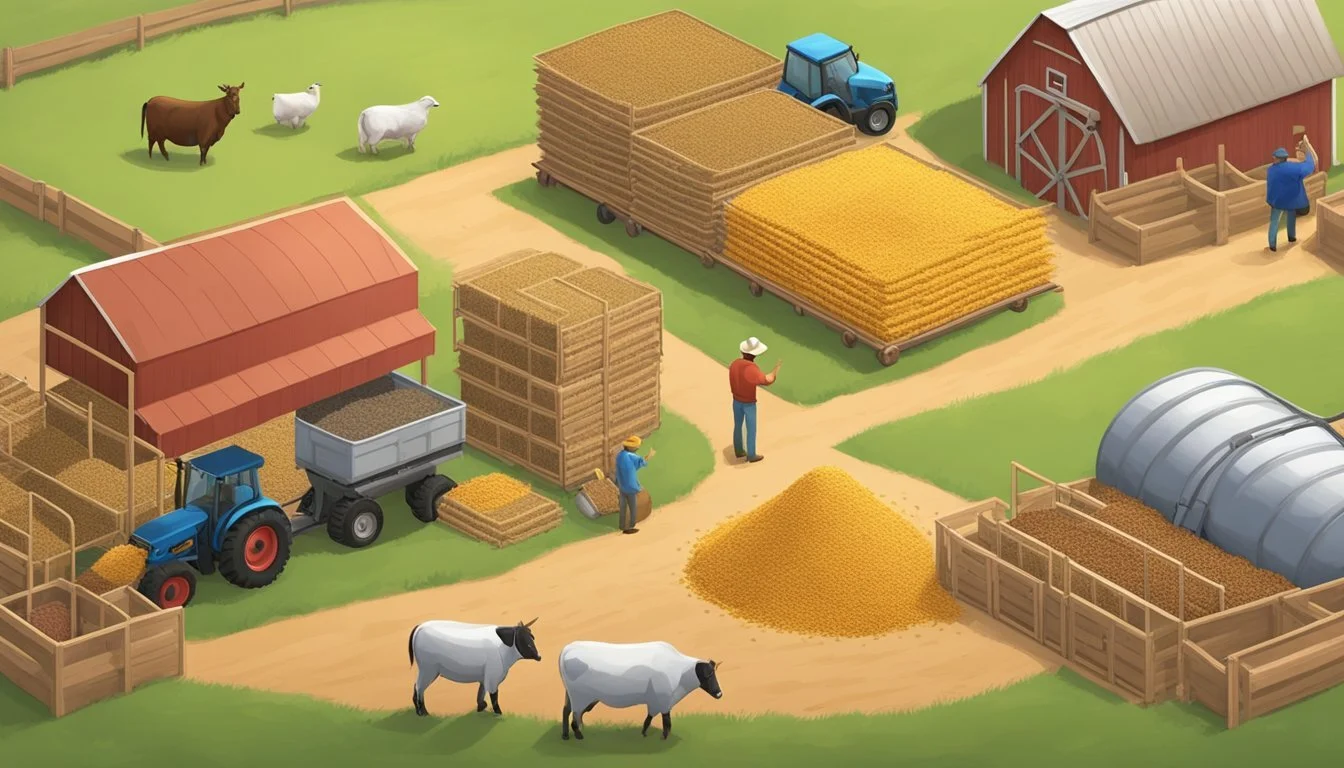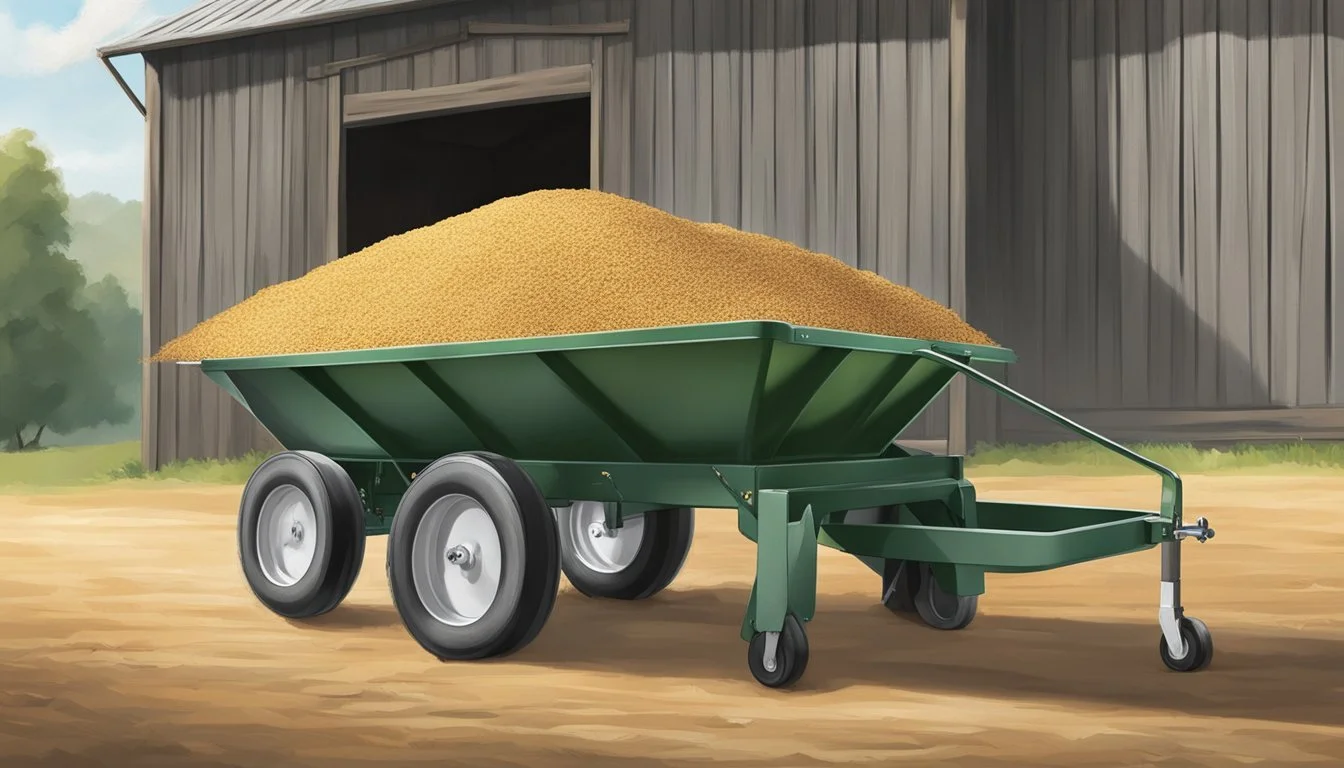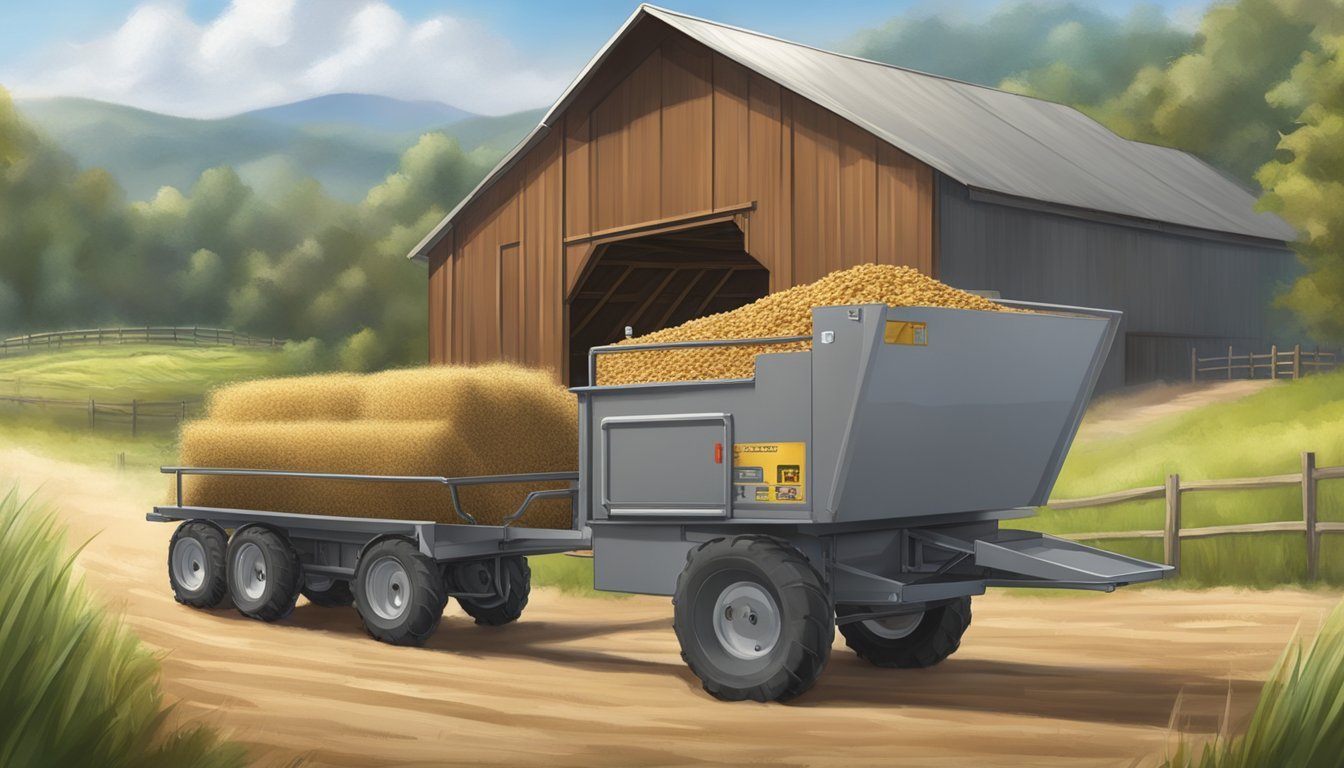The Ultimate Guide to Using a Mobile Feed Cart
Streamline Your Animal Feed Transport and Distribution Process
Mobile feed carts have revolutionized the way animal feed is transported and distributed across various settings, from small farms to large-scale agricultural operations. Designed for ease of use and efficiency, these carts minimize the physical strain associated with the manual handling of feed. They come equipped with features such as battery power, allowing for smooth and quiet operation, and often are constructed with materials like stainless steel to ensure durability and ease of cleaning. The capacity to move large quantities of feed effortlessly not only saves time but also helps maintain consistent feeding schedules, which is vital for the health and growth of livestock.
The convenience offered by mobile feed carts is further enhanced through the integration of technology. Some advanced models boast features like programmable dispensers, which can be set to release specific amounts of feed at predetermined times. This level of precision aids in portion control, contributing to better feed management and reduced waste. Moreover, certain carts are designed to handle a variety of feed types, including both solid grains and wet silage, making them versatile tools in animal husbandry.
As the agricultural industry continues to embrace automation, mobile feed carts stand out as practical solutions that streamline daily tasks. They ensure a consistent and reliable way of feeding animals, making the process less labor-intensive and more accurate. With the right feed cart, farmers and caretakers can optimize their operations, dedicating more time to other critical aspects of animal care and farm management.
Mobile Feed Cart: Revolutionizing Animal Feed Management
Mobile feed carts have become a game-changer in the realm of animal feed management, with a clear focus on transportation, convenience, and efficiency. These carts are ingeniously designed to serve as a solution for farmers who require a reliable system for the distribution of animal feed.
Transportability: A mobile feed cart's strong suit is its ability to facilitate easy movement across different terrains on the farm. Equipped with robust wheels and a streamlined design, these carts ensure that the transportation of feed is no longer a laborious task.
Convenience: Each cart is crafted with the user in mind, providing features such as adjustable handles, storage compartments, and feed dispensers. This level of convenience allows a farmer to distribute feed without the need for continuous refilling or manual carrying.
Efficiency: By enabling precise feed distribution, mobile feed carts empower farmers to reduce waste and ensure that every animal receives the correct quantity of feed. The simplification of the feed process translates to a more efficient daily routine, allowing more time for other critical farm activities.
Storage: Carts offer ample space for various types of animal feed, catering to different dietary requirements.
Maneuverability: Their design prioritizes ease of movement, even when fully loaded.
Durability: Constructed from high-quality materials, they are built to withstand farm environments.
The farmer's adoption of a mobile feed cart represents a commitment not only to operational efficiency but also to the well-being of their livestock, ensuring a consistent and stress-free feeding regimen.
Benefits of Utilizing a Mobile Feed Cart
Mobile feed carts are transforming the way feed is transported and distributed in a farm setting. Their design maximizes efficiency and cost-effectiveness while offering a considerable return on investment for agricultural operations.
Streamlined Feed Transport
The primary advantage of a mobile feed cart is the ease with which it facilitates the movement of animal feed. By incorporating wheels and ergonomic handle designs, these carts reduce physical strain and simplify the process of transporting feed across various terrains. The carts can efficiently carry large quantities of feed, saving time that would otherwise be spent on multiple trips.
Enhanced Efficiency and Productivity
Efficiency is greatly enhanced with a mobile feed cart. It allows workers to transport feed directly to the animals without unnecessary stops and starts, as the cart is designed to dispense feed with precision. Consequently, it streamlines the feeding process and reduces labor time, thereby increasing overall farm productivity.
Cost-Effectiveness and Return on Investment
Investing in a mobile feed cart is cost-effective due to its long-term savings on labor and time. With enhanced productivity, the investment pays for itself over time. Additionally, by ensuring precise feed distribution, feed waste is minimized, leading to further savings for the agricultural business. These cost savings contribute to a positive return on investment, making the mobile feed cart a practical choice for modern farming.
Design and Build: Components That Make a Difference
When selecting a mobile feed cart for animal feed transport and distribution, the design and quality of components can significantly impact performance and longevity. Here we examine the materials that enhance durability, variabilities in size and capacity for diverse needs, and the elements that contribute to the mobility and ease of maneuverability.
Materials and Durability
The choice of material is critical for ensuring a durable mobile feed cart. Stainless steel and heavy-duty plastics are commonly utilized for their resistance to corrosion, impact, and the harsh conditions of farm environments. Metal components are often galvanized or coated to prevent rust, while the use of robust plastics can offer a lightweight yet sturdy alternative.
Steel (Galvanized/Coated)
Heavy-duty Plastics
Sizing and Capacity Choices
Mobile feed carts come in different sizes and capacities, tailored to meet specific operational demands. The capacity typically ranges from small, 50-pound carts suitable for compact spaces, to larger units capable of handling several hundred pounds of feed for bigger herds.
Small: 50-100 lbs
Medium: 101-200 lbs
Large: 201 lbs and above
Mobility and Maneuverability
Effortless movement is achieved through a well-designed wheel and axle system. A standard setup includes two fixed wheels and two swivel casters that offer a blend of stability and steering flexibility. The axle strength is critical to handling load capacity and ensuring smooth operation over different terrains.
Wheels: 2 Fixed + 2 Swivel
Axles: Designed to support full cart capacity
Technological Integration in Feed Carts
Mobile feed carts are revolutionizing animal feed transport and distribution through state-of-the-art technological integration. These carts incorporate advanced automation systems, precision controls, and innovative battery solutions to enhance the efficiency and reliability of feeding operations.
Automated Feeding Systems
Mobile feed carts equipped with automated feeding systems simplify the distribution of animal feed. They seamlessly transport various blended materials, like pellets and grains, directly to the feeding areas. Features such as programmable routes and automatic dispensing reduce the need for manual labor, simultaneously addressing labor shortages and increasing production efficacy.
Precision Controls
Equipped with precision controls, these feed carts offer users detailed command over feed dispensing processes. Controls ensure precise measurements and distribution, significantly mitigating waste and improving consistency in feed portions. Touchscreen interfaces and remote control capabilities allow for real-time adjustments and monitoring of feed flow, which can be particularly impactful in maintaining feed quality and animal health.
Battery and Charging Solutions
The effectiveness of a mobile feed cart is often dictated by its battery and charging solutions. Modern carts are designed with long-lasting battery life to minimize downtime. Many feature smart charging capabilities, ensuring the batteries maintain optimal performance and longevity. The integration of energy-efficient practices also aids in reducing operational costs associated with powering the carts.
By integrating these technological advancements, mobile feed carts are setting a new standard for animal feed transport and distribution that is both efficient and reliable.
Selecting the Right Mobile Feed Cart for Your Needs
When selecting a mobile feed cart, one must consider storage capacity, manufacturer's specifications, and the possibility of customization to effectively meet the demands of animal feed transport and distribution.
Assessing Feed Storage Requirements
One should first calculate the volume of feed needed daily, which dictates the storage capacity the cart must accommodate. It is crucial to ensure the cart can handle peak storage demands and maintain the integrity of the feed during transportation.
Understanding Manufacturers' Specifications
Investigating a mobile feed cart's specifications is key. This includes evaluating:
Load capacity: Ensure it supports the weight of the intended feed without compromise.
Material: Look for durable materials like stainless steel or high-density plastics.
Wheels and handles: They must be designed for ease of maneuverability and stability on different terrains.
Customization Options
Manufacturers may offer customization options to suit specific workflows. This can include:
Modular attachments: for versatile storage solutions.
Adjustable shelving: for different feed types and sizes.
Ergonomic features: to reduce strain on the user during operation.
By considering these detailed aspects, one can choose a mobile feed cart that is tailored to their specific needs, ensuring efficient feed handling and distribution.
Safety and Maintenance Considerations
When operating a mobile feed cart, prioritizing safety and performing regular maintenance are essential. These measures ensure the equipment remains durable and can be used effectively without posing any risks to the operator or animals.
Safe Operation Practices
Operators must follow a set of safety protocols to prevent accidents and injuries. It is crucial that they:
Always check that the feed cart's path is clear of obstacles to avoid tipping or collision.
Ensure that the brakes are fully engaged when the cart is stationary to prevent unintended movement.
Wear appropriate personal protective equipment, such as gloves and closed-toe shoes, to safeguard against potential hazards.
Maintenance and Upkeep
Regular maintenance extends the life of a mobile feed cart and preserves its functionality. Operators should:
Inspect the cart's wheels and axles for wear and lubricate them regularly to ensure smooth operation.
Check for and tighten any loose bolts or fittings to maintain the structural integrity of the cart.
Clean the cart after each use, especially if different types of feed are carried, to avoid cross-contamination and buildup of residue that can attract pests or lead to feed spoilage.
Troubleshooting Common Issues
Familiarity with common issues can greatly improve response time and reduce downtime. Operators should be able to:
Identify unusual noises or resistance during movement, which could indicate debris caught in the wheels or a need for lubrication.
Recognize signs of overloading, such as difficulty in handling or structural bowing, and adjust the load accordingly to maintain a safe and operational cart.
Mobile Feed Cart Use Cases Across Industries
Mobile feed carts have revolutionized the way animal feed is transported and distributed across various industries. Their durable design and easy maneuverability make them an essential asset within the following sectors:
Agriculture: For farming operations, whether on a small family farm or a large agricultural enterprise, mobile feed carts provide an efficient means of delivering feed to livestock, ranging from cattle and horses to smaller animals like sheep and goats.
Zoos and Wildlife Sanctuaries: These institutions require the transport of specialized feed for different species. A mobile feed cart ensures that caretakers can distribute the correct amount of food to each enclosure, safely and without cross-contamination.
Equestrian Facilities: Horse stables benefit greatly from mobile feed carts, allowing for the streamlined delivery of hay, grains, and supplements to individual horses, tailored to their specific dietary needs.
Aquaculture: In fish farming environments, mobile feed carts help in the dispersion of feed into ponds and tanks, helping to maintain consistent feeding schedules.
Research Facilities: Animals involved in research require strictly controlled diets. Mobile feed carts facilitate precise measurement and distribution of feed, aiding in the maintenance of experimental variables.
The adaptability of feed carts to the specific needs of an industry, from adjustable portions to controlled rates of feed delivery, has made them an indispensable tool. Its usage is a testament to their ability to make feed transport and distribution both effortless and precise.
Packaging and Transportation of Feed Carts
In the context of mobile feed carts, efficient packaging and transportation are critical for ensuring seamless operation and longevity. The design and materials used for packaging must protect the carts during transport, while the logistics must be planned to facilitate easy movement from point A to point B.
Packaging Solutions for Feed Carts
Materials and Design: Manufacturers typically use robust packaging materials to ensure the feed carts arrive in optimal condition. Common packaging materials include:
Heavy-duty cardboard
Protective plastic wraps
Supportive strapping
Cushioning inserts
For bulk bags and portable feed storage units, design considerations might include the use of 4-panel, U-panel, or circular construction to maintain shape and prevent damage during the transport process.
Preparation for Shipment:
The carts are often disassembled or folded to reduce package size.
All detachable components are secured and labeled for easy assembly upon delivery.
Assembly instructions are provided clearly to ensure the end-user can set up the feed cart effortlessly.
Transportation Logistics
Vehicle Selection: The type of transportation chosen depends on the cart's size and quantity. Options include:
Small trailers or trucks for individual carts
Larger freight vehicles for bulk orders
Securing the Load: The carts are secured tightly to the transport vehicle using ratchet straps or other restraints to prevent movement and potential damage.
Lightweight Options: For enhanced portability and ease of transport, manufacturers might offer feed carts constructed with lightweight materials without compromising the structural integrity or durability.
Delivery Routes: Transport routes are mapped strategically to minimize travel time and ensure that customers receive the feed carts promptly and in good condition. Logistics providers may use software to optimize routes and track shipments in real-time.
Auger and Blower Systems: Enhancing Feed Distribution
Feed distribution efficiency is vital in modern animal farming, and auger systems are central to achieving this. Augers transport feed from a central storage facility to individual feeders with precision and care, ensuring that all the feed arrives intact. This is especially true for systems such as the Flex-Auger, which can handle a variety of feed types, including pellets, mash, or custom compositions suitable for both poultry and pigs.
The blower systems complement augers by quickly channeling lighter feed types over greater distances. This method is particularly useful for larger farms where extensive networks are required. They use air to push the feed through tubes to the desired locations, making feed distribution not only fast but also efficient.
Here are some key advantages:
Speed: Auger systems like the FLEX-AUGER® are capable of moving a high volume of feed per hour.
Versatility: Flexible to work with many feed types, such as pellets and mash.
Energy Efficiency: Systems consume minimal energy, translating to cost savings.
In addition to speed and efficiency, these systems are also designed for durability. A system's longevity is represented by offerings like the 10-year pro-rated warranty from Brock's FLEX-AUGER Systems, a testament to their robust design and build quality.
When it comes to mobile feed carts, auger and blower systems can be integrated to facilitate the easy transfer of feed to various locations. This integration ensures animals receive fresh feed on a consistent schedule, contributing to better animal health and optimizes feed conversion rates.







